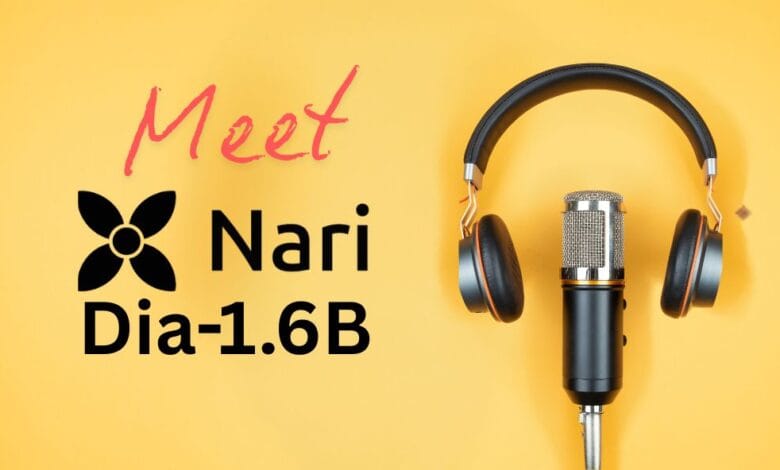Realistic AI Conversations Get Closer with Nari Labs’ Open-Source Dia Model

▼ Summary
– Nari Labs has released Dia, an open-source Text-to-Speech (TTS) model designed to generate realistic, multi-speaker dialogue from text transcripts.
– Dia incorporates non-verbal sounds like laughter and coughing to enhance expressiveness and realism in synthesized speech.
– The model supports audio conditioning, allowing users to guide the output’s tone, emotion, or delivery style using short audio samples.
– Dia’s model weights and inference code are accessible on platforms like GitHub and Hugging Face, promoting community involvement and further innovation.
– Potential applications for Dia include generating audio for podcasts, audiobooks, video game characters, and conversational interfaces.
A new player has emerged in the rapidly evolving field of generative audio. A group identifying as Nari Labs recently released Dia, a sophisticated Text-to-Speech (TTS) model made available with open weights. Dia distinguishes itself by focusing specifically on generating realistic, multi-speaker dialogue directly from text transcripts, complete with non-verbal cues.
Advancing Dialogue Generation
Traditional TTS systems often excel at reading sentences clearly but can struggle with the natural cadence and interaction of conversation. Nari Labs appears to be tackling this challenge head-on. Dia, a sizable 1.6 billion parameter model, is designed to interpret a script and produce audio featuring multiple distinct voices engaged in conversation.
Beyond just spoken words, Dia reportedly incorporates non-verbal sounds like laughter or coughing into the generated audio, based on cues within the input text. This capability aims to add a layer of expressiveness and realism often absent in synthesized speech. Furthermore, the model supports audio conditioning – users can provide a short audio sample to guide Dia’s output in terms of tone, emotion, or delivery style, offering greater control over the final result.
While audio conditioning allows for influencing the vocal characteristics, it’s described more as mimicking style and emotion rather than precise voice cloning for arbitrary text, a capability seen in some other specialized AI tools.
Ability to create non-verbal tags
[S1] Hey there (coughs).[S2] Why did you just cough? (sniffs)
[S1] Why did you just sniff? (clears throat)
[S2] Why did you just clear your throat? (laughs)
[S1] Why did you just laugh?
[S2] Nicely done.
Open Access and Development
In a move promoting community involvement, Nari Labs has made Dia’s model weights and the necessary inference code accessible on popular platforms like GitHub and Hugging Face. This open approach allows researchers and developers worldwide to experiment with, integrate, and potentially build upon Dia’s capabilities. Nari Labs acknowledges support from Google’s TPU Research Cloud (TRC) for the project and cites inspiration from previous work in the field, including models like SoundStorm and Parakeet. The group mentions that “Nari” is the Korean word for lily.
Distinctions and Potential Uses
Dia’s focus on multi-speaker dialogue and non-verbal sounds sets it apart from many standard TTS offerings that prioritize single-voice narration. Its open nature also contrasts with numerous high-quality, proprietary TTS services available commercially.
It’s also important to differentiate Dia from AI tools with fundamentally different goals. For instance, Google’s NotebookLM is designed for analyzing and synthesizing information from user-provided documents – it works with text to produce text insights. Dia, conversely, is a generative tool that creates new audio content from text input.
The capabilities demonstrated by Dia suggest potential applications in areas such as:
- Generating draft audio for podcasts or scripted content.
- Creating more engaging audiobook experiences with distinct character voices.
- Developing expressive dialogue for video game characters or animations.
- Prototyping conversational interfaces or media projects.
The release of Dia represents another step forward in the quest for more natural and versatile AI-generated audio. Its open-weights availability provides a valuable resource for the research community and could stimulate further innovation in realistic speech synthesis.
Technical Snapshot
Dia by Nari Labs
| Model: | Dia |
| Developers: | Nari Labs |
| Type: | Text-to-Speech (TTS) |
| Size: | 1.6 Billion Parameters |
| Focus: | Multi-speaker dialogue generation from transcripts. |
| Features: | Includes non-verbal sounds (e.g., laughter); supports audio conditioning for style/tone control. |
| Availability | Open-Weights model and inference code. |
| Platforms: | GitHub, Hugging Face. |
| Affiliation: | Acknowledges support from Google TPU Research Cloud (TRC). |
